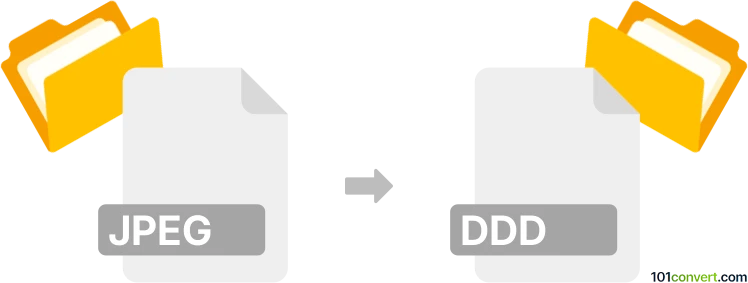Convert JPEG to DDD
How to convert JPEG images to DDD 3D model files using Blender, Tinkercad, and Cubify software.

How to convert jpeg to ddd file
- Other formats
- No ratings yet.
101convert.com assistant bot
4h
Understanding jpeg and ddd file formats
JPEG (Joint Photographic Experts Group) is a widely used raster image format known for its efficient compression and compatibility with most devices and software. It is commonly used for photographs and web images.
DDD files are associated with 3D Design Data and are primarily used by 3D Systems' Cubify software for 3D modeling and printing. DDD files store 3D object data, including geometry, textures, and sometimes color information, making them suitable for 3D printing and modeling applications.
How to convert jpeg to ddd
Converting a JPEG image to a DDD 3D model file is not a direct process, as JPEG is a 2D raster image and DDD is a 3D model format. The conversion requires interpreting the 2D image and generating a 3D model from it, often through a process called image-to-3D extrusion or height mapping.
Recommended software for jpeg to ddd conversion
The best approach is to use a 3D modeling tool that supports importing images and exporting to DDD format. 3D Systems Cubify (if available) is the native software for DDD files. However, since Cubify is discontinued, you can use Blender or Tinkercad to create a 3D model from a JPEG, then export to a common 3D format (like STL or OBJ), and finally convert to DDD using a file converter or legacy Cubify software.
- Blender: Import your JPEG as a texture or use it for displacement mapping to create a 3D object. Export the model as STL or OBJ.
- Online converters: Use a service like AnyConv or Bear File Converter to convert STL/OBJ to DDD, if available.
- 3D Systems Cubify: If you have access, use File → Import to bring in your 3D model, then File → Save As and select DDD as the output format.
Step-by-step conversion process
- Open Blender or Tinkercad.
- Import your JPEG image and use it to create a 3D model (e.g., via height map or extrusion).
- Export the 3D model as STL or OBJ.
- Use a converter or 3D Systems Cubify to open the STL/OBJ file.
- Save or export the file as DDD.
Tips and considerations
- Quality of the 3D model depends on the detail in the JPEG and the conversion method.
- Not all converters support DDD; using native or legacy software is often necessary.
- For best results, use high-contrast images for height mapping.
Note: This jpeg to ddd conversion record is incomplete, must be verified, and may contain inaccuracies. Please vote below whether you found this information helpful or not.